Vance and Lammy Mix Fishing and Foreign Policy at UK Estate

© Pool photo by Suzanne Plunkett

© Pool photo by Suzanne Plunkett

© Dan Kitwood/Getty Images

© Violeta Santos Moura/Reuters
After Trump repeatedly vowed to end the war in 24 hours, slipping deadlines and Putin’s resistance test his patience

© AFP/Getty

More than half of Ukrainians expect their country to join the European Union within the next decade, though confidence in rapid accession has declined for the second consecutive year, according to a Gallup poll.
The survey asked respondents when they expect Ukraine to become an EU member: within 10 years, 10-20 years, more than 20 years, or never. Some 52% believe membership will occur within 10 years – the lowest figure since the start of the full-scale war. This represents a significant drop from 2022-2023, when 73% held this view.
About 16% of respondents expect EU accession within 10-20 years, while 5% believe it will take more than 20 years. Some 18% do not believe Ukraine will ever be accepted into the EU – the highest such figure in recent years, though the increase in skeptics was smaller than for a similar question about NATO membership.
The poll also revealed that Ukrainians’ assessment of US leadership in 2025 reached its lowest point in more than 10 years, while approval of Berlin’s actions hit a multi-year high.
The data shows a clear shift in Ukrainian public opinion regarding EU integration timelines. The 21% decline in those expecting rapid EU membership – from 73% in 2022-2023 to 52% currently – represents the most substantial change in public sentiment on this issue since the war began.
Despite the declining optimism for quick accession, the majority of Ukrainians maintain faith in eventual EU membership. Only 18% expressing complete skepticism about the prospect.
This toxic relationship is weird and dangerous for the West. World affairs editor Sam Kiley explains why

© AFP/Getty

© Hilary Swift for The New York Times
With the summit venue yet to be announced, all eyes are on where the two presidents could meet

© AFP/Getty

© Saboor Abdul/Reuters

© The New York Times
Steve Witkoff and Vladimir Putin met for about three hours in a last-minute bid to seek a breakthrough in the three-and-a-half-year war

© Sputnik
Steve Witkoff – the president’s international diplomatic Mr Fixit – has failed to bring peace to the Middle East or deliver on Trump’s boast that he would end the war in Ukraine in 24 hours, writes world affairs editor Sam Kiley

© RIA_Kremlinpool/Telegram
Ukraine considers all grain produced in the four regions and Crimea - annexed by Russia in 2014 - to have been stolen by Moscow

© Reuters

The Netherlands was the first country to contribute to the Nato Prioritised Ukraine Requirements List (PURL) initiative

© via REUTERS
Russia's move follows Trump's nuclear messaging

© Sputnik

© Lisi Niesner/Reuters
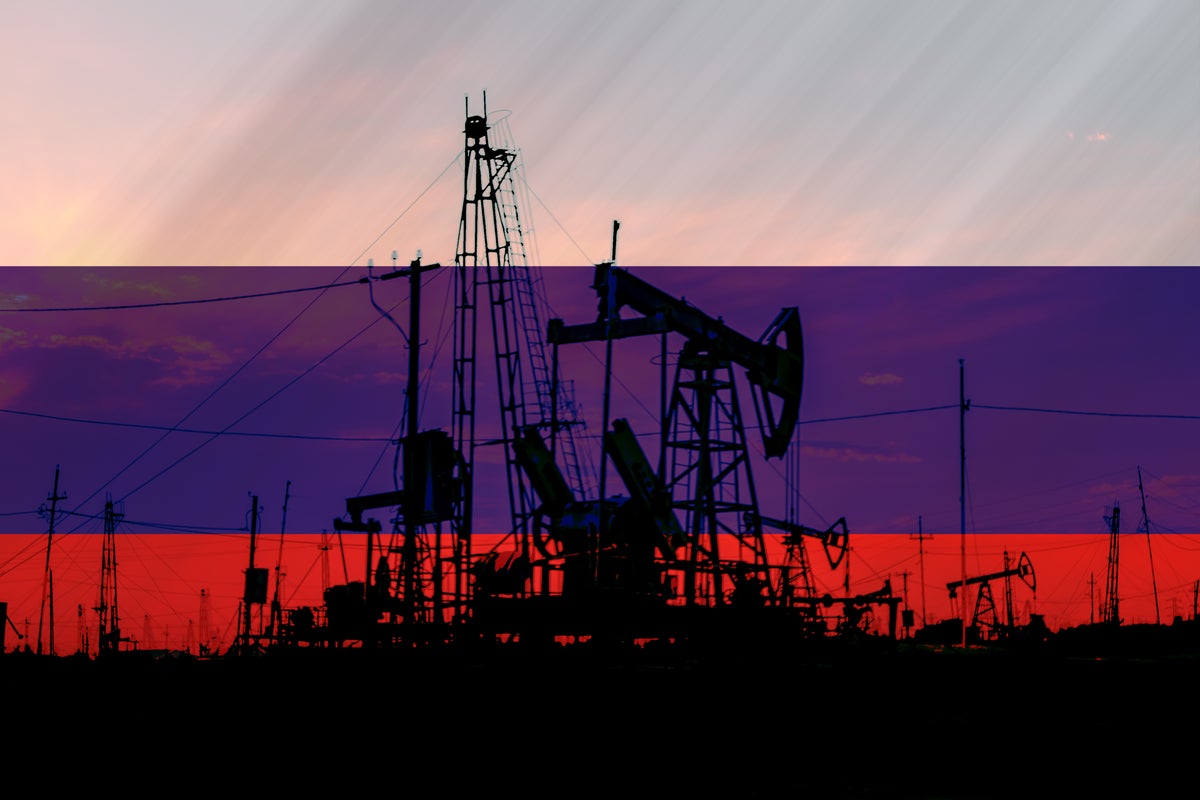
© Getty Images
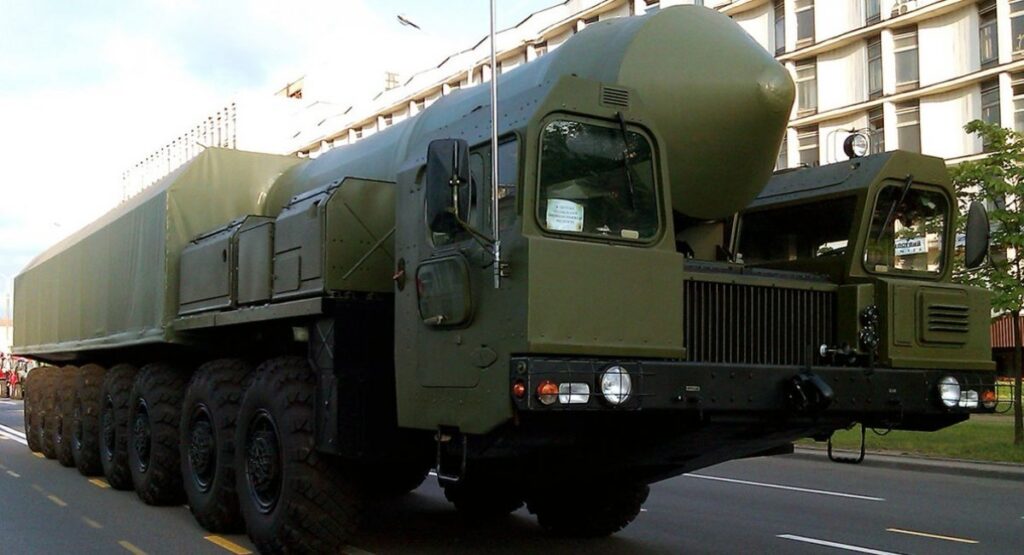
The Kremlin again threatens Europe with missiles. The Russian Foreign Ministry has announced that the country is lifting its self-imposed restriction on the deployment of land-based ballistic and cruise missiles with a range between 500 and 5,500 km, according to Radio Free Europe/Radio Liberty.
Once-banned missiles are back on the table. In 1987, the US and USSR agreed to eliminate all missiles of this class, but in 2019, the treaty formally expired. After that, Russian President Vladimir Putin claimed Russia would not be the first to deploy such missiles unless the US did so first.
Now, Moscow reverses course: it has lifted the restriction, blames the West, and claims a threat from American missiles in Europe and the Asia-Pacific region. The official reason: “steps by the collective West” that, according to the Kremlin, “destabilize the situation in border regions.”
“The Russian Foreign Ministry acknowledges the disappearance of conditions for maintaining the unilateral moratorium on the deployment of such weapons,” the statement says.
Western states already claimed in 2019 that Russia had de facto violated the agreement — the main evidence being the 9M729 missile system, which, according to the US and NATO, has a range exceeding 500 km.
Moscow denies it, but reality suggests otherwise: the missiles exist, and now the Kremlin officially admits it is ready to deploy them. This move threatens to spark a new arms race and escalate security risks not only for Ukraine but for all of Europe.
In November 2024, Russia launched a 9M729 missile at the city of Dnipro, marking the first confirmed combat use of the controversial system, also known by the codename “Oreshnik”. The missile was equipped with six warheads, each capable of independent targeting. The extent of damage remains undisclosed.
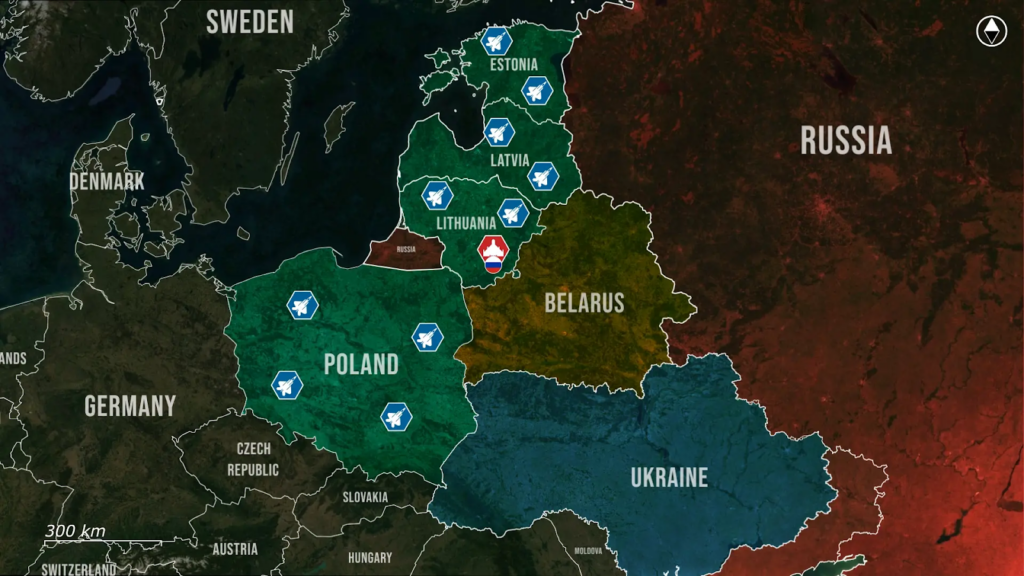
Day 1257
On 3 August, the biggest news comes from Eastern Europe.
Here, a Shahed-type drone flew directly into Lithuanian airspace and passed over the capital, marking a serious escalation in Russia’s aerial provocations against Nato’s eastern flank. Poland’s air force is already on a nightly high alert, and now the rest of the Baltics are joining in, raising what increasingly resembles an iron Curtain in the air.
Recently, a Russian Shahed-like drone crossed into Lithuanian airspace from Belarus and flew over the outskirts of Vilnius, the capital of Lithuania, close enough for civilians to see and film the device in flight. Initial fears suggested a live munition had entered Nato airspace, as Shaheds are often fitted with fragmentation, thermobaric, incendiary, or delayed-fuse warheads to cause maximum casualties and damage to civilian property.
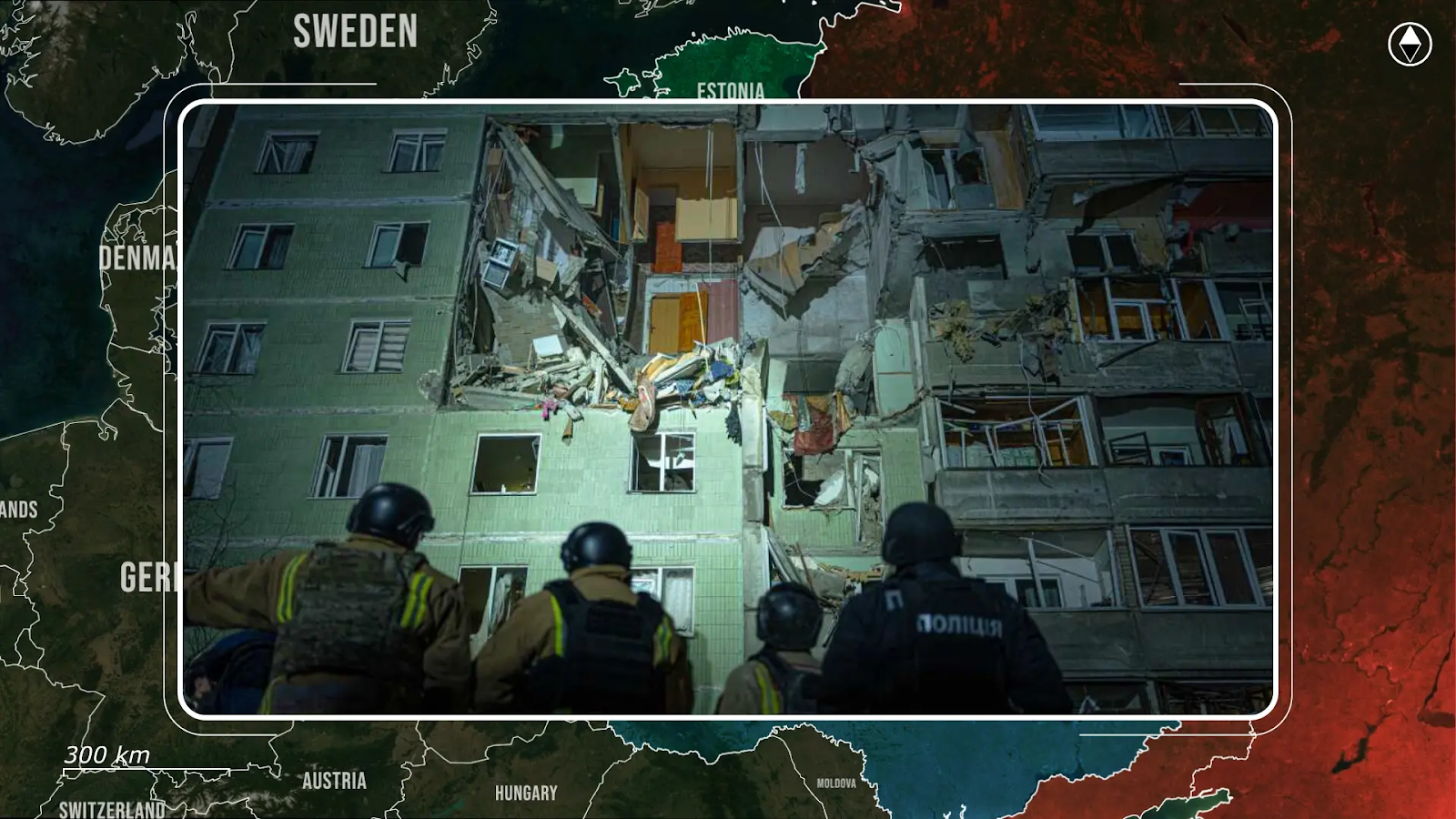
Fortunately, upon further inspection of the video footage, the object was identified as a Gerbera decoy drone, a visually similar platform Russia uses for both reconnaissance and saturation purposes during their daily strikes on Ukrainian cities.
While unarmed, the drone crossed directly over a Nato capital, far from any logical flight path to Ukraine, making it clear that this was no accident.
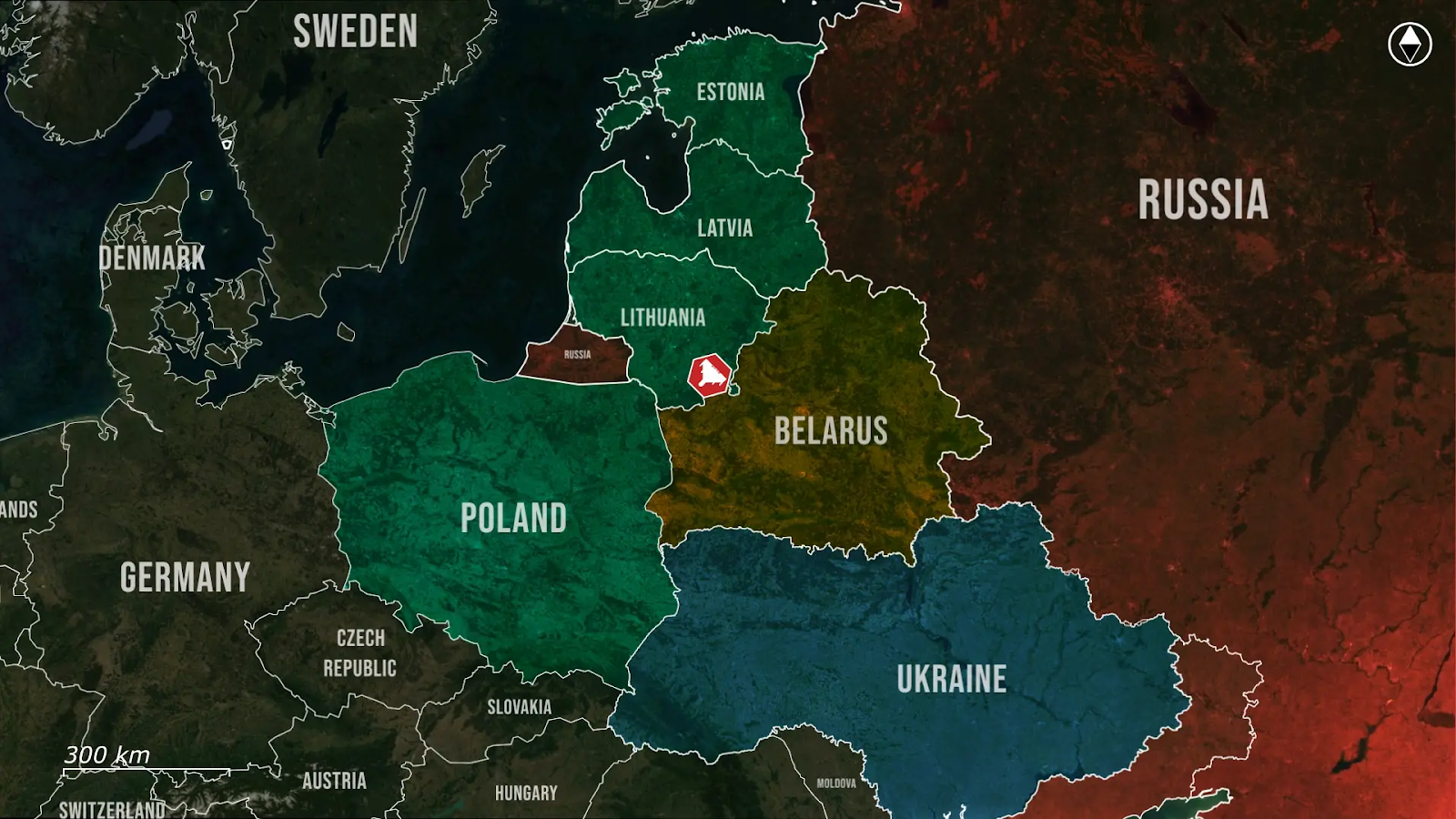
Instead, it was a calculated decision to test Nato’s reaction time, radar coverage, and political tolerance for such direct aerial threats and provocations, and critically, Lithuanian forces did not intercept.
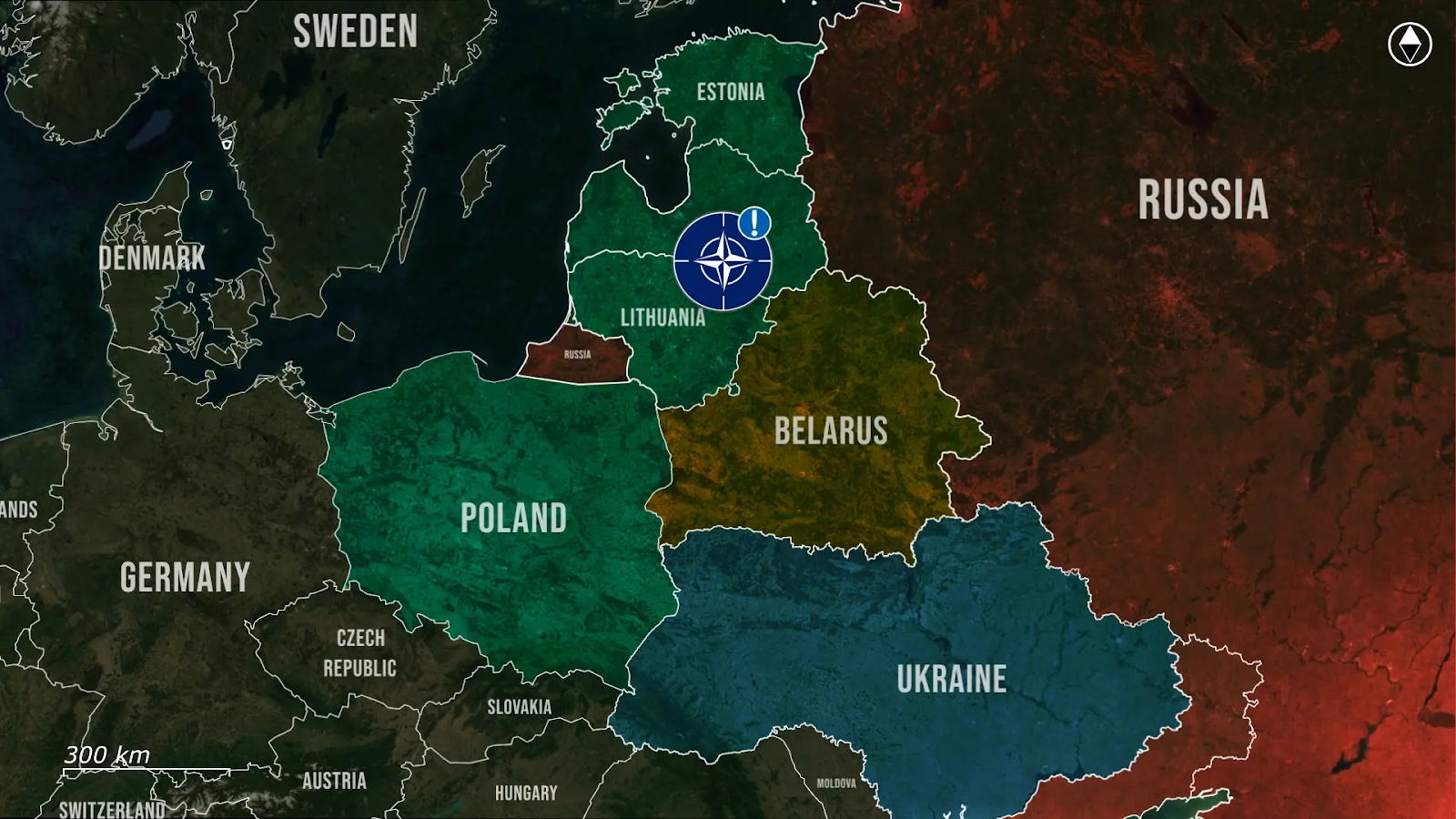
Poland, meanwhile, has entered a state of routine high alert, with Polish and Nato forces scrambling jets and raising radar systems every time Russia launches a large-scale assault on Ukraine, which happens every night and now often even during the day as well. Nato partners, including Swedish Gripens, are now joining Poland in maintaining a high alert status during Russia’s large-scale drone and missile attacks on Ukraine, reinforcing joint readiness across the eastern flank. While these alerts are precautionary, they have become the new norm, as the Polish border lies directly behind the approach paths of Russian missiles and drones targeting western Ukrainian cities. This proximity means any technical malfunction or mid-course deviation could result in a direct violation of Polish airspace, as seen in previous incidents, including when debris from Russian missiles entered Polish territory in 2022, or when a Ukrainian air defense missile landed on a Polish field, killing two farmers.
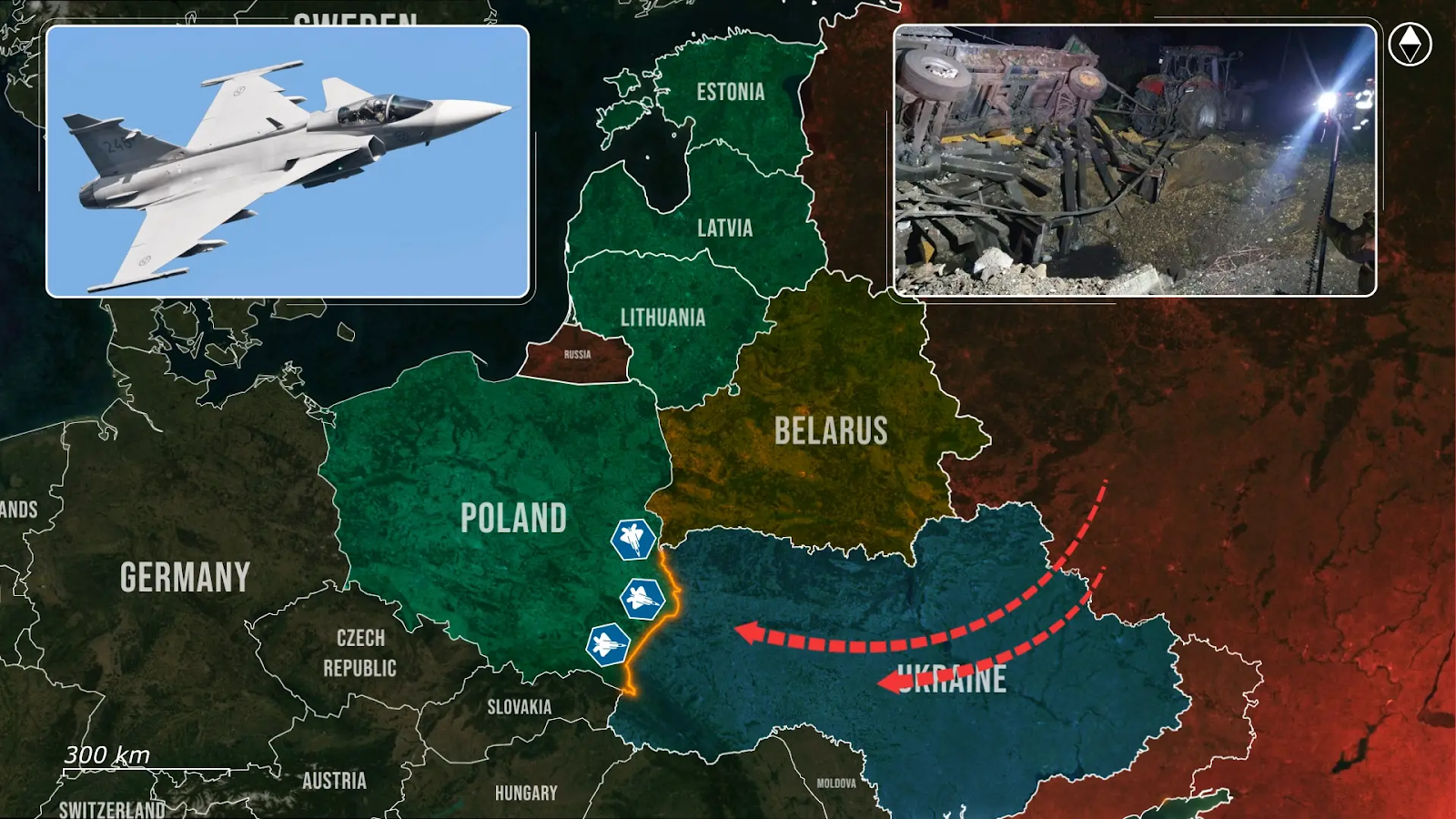
Unlike the calculated provocation over Vilnius, Poland faces a more constant strain of nightly threats, scrambling fighters, activating radar grids, and maintaining alert in civilian areas without knowing whether each launch might cause military objects to cross into its airspace. Across the Baltics, Lithuania, Latvia, and Estonia have long depended on Nato’s Baltic Air Policing mission, with Hungary, Italy, and Spain being part of the current rotation, maintaining quick-reaction alert status and integrated into Nato’s broader air defense system.
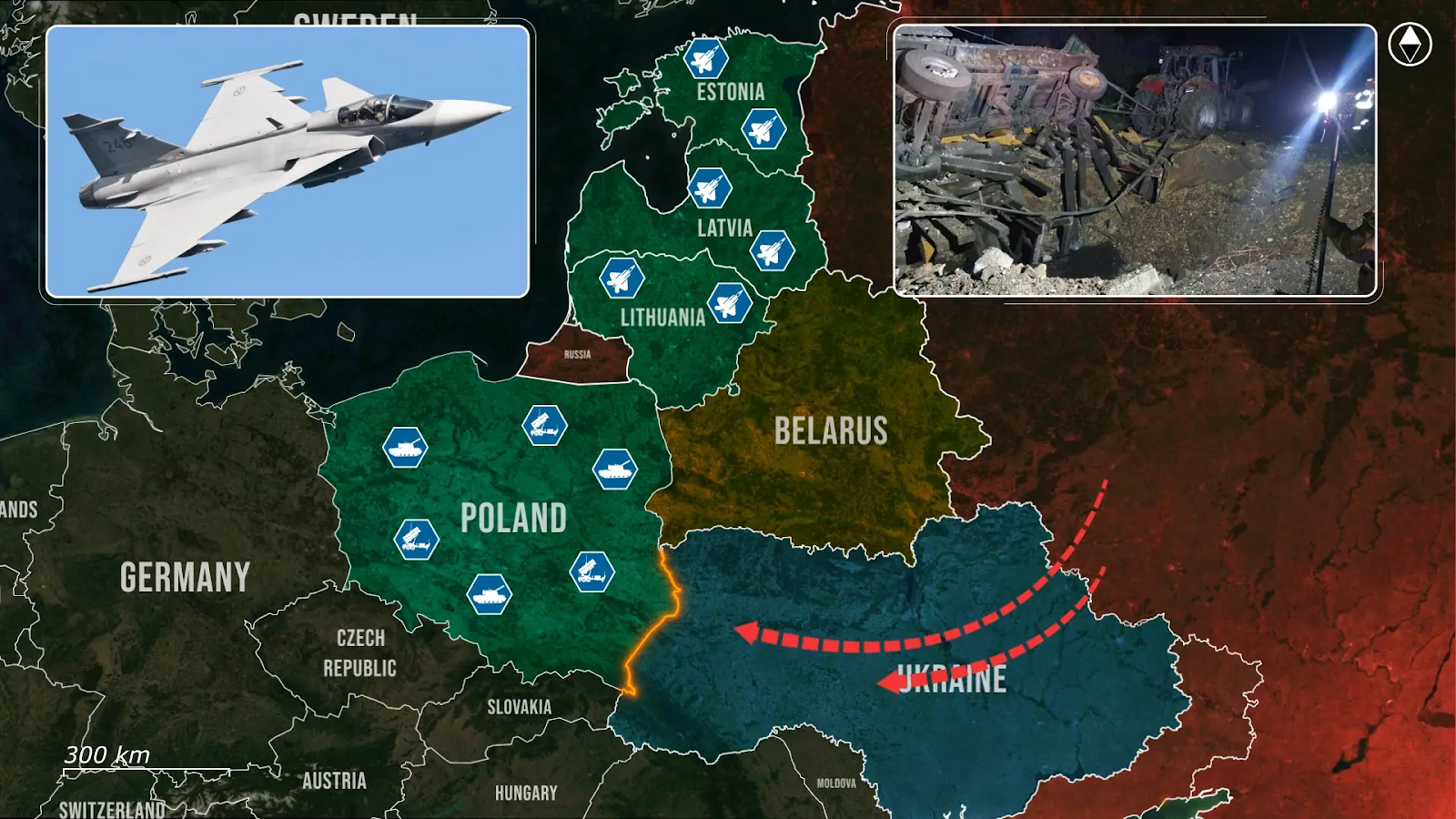
However, the unchallenged drone over Vilnius shows the limits of deterrence alone, and Lithuania is now accelerating the deployments of Ukrainian-developed acoustic drone detection systems, seeking to fill gaps in its early warning networks exposed by the most recent airspace violation.
At the same time, the Baltic states are reinforcing their readiness for both air-to-air and ground-to-air engagements by expanding joint training protocols, adapting quick-reaction procedures, and integrating new detection systems designed to counter the threat of low-flying unmanned platforms.
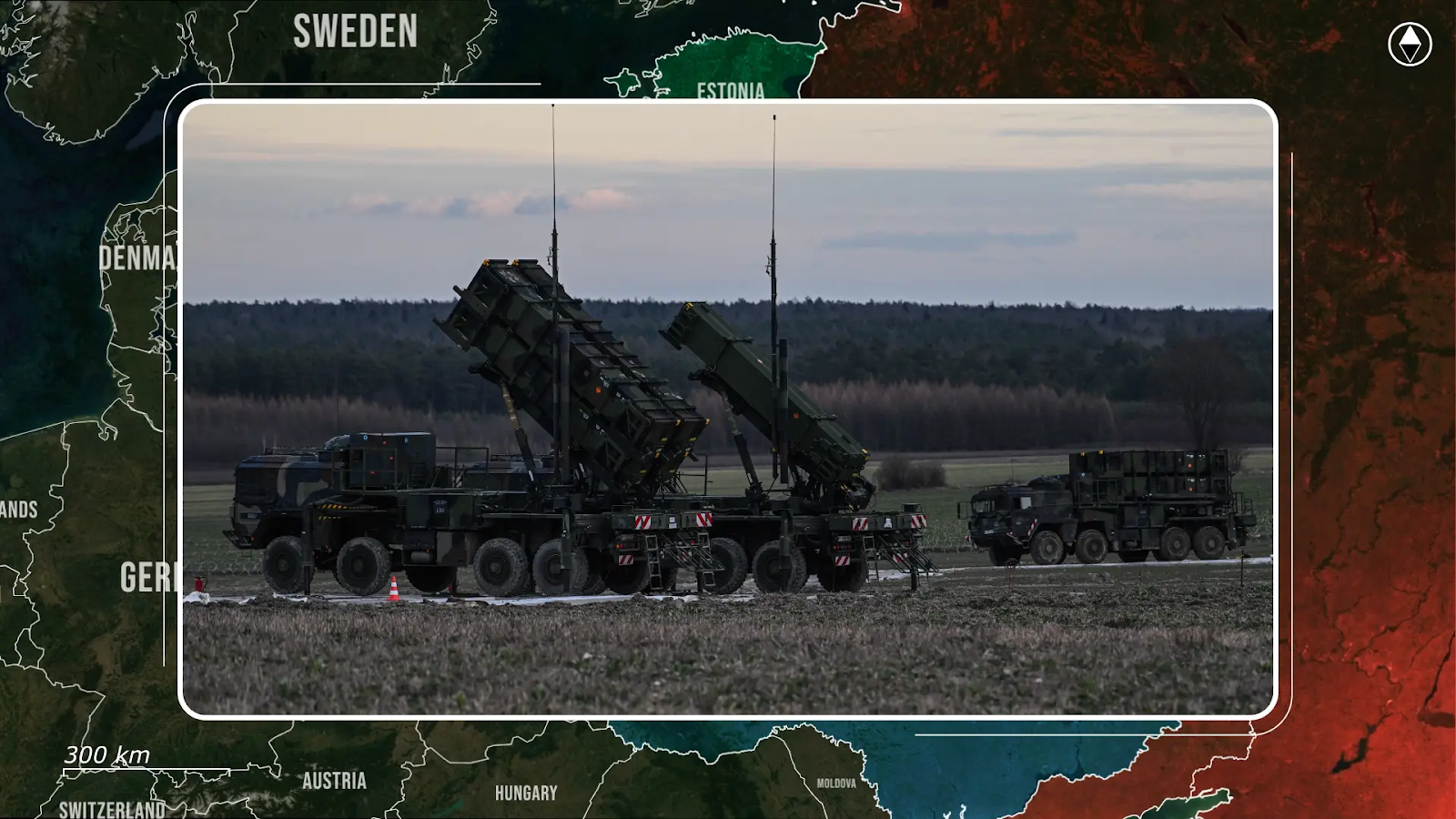
And across all three states, radar tracking, jamming incidents logs, and drone incursions are now analyzed with a single assumption: that any aerial anomaly could be the opening in a broader conflict. The emerging posture is no longer passive monitoring; with new drone detection systems, joint alert protocols, and revised civilian flight corridors, it is becoming forward-leaning, reinforced, and increasingly closed, an Iron Curtain in the air.

Overall, Russia’s latest airspace violations are increasingly escalating and reshaping Nato’s eastern defenses through repeated, calculated provocations that expose gaps, test thresholds, and force reaction. The incursion over Vilnius is a template for how Moscow may continue to pressure Nato’s eastern flank, trying to provoke member states into triggering an open conflict. As Poland’s nightly alerts become routine and Baltic air defenses are forced to harden, the question is no longer whether Nato will respond, but how far that response will go, and as this pattern deepens, the skies over Eastern Europe are no longer a buffer, they are becoming the front line.
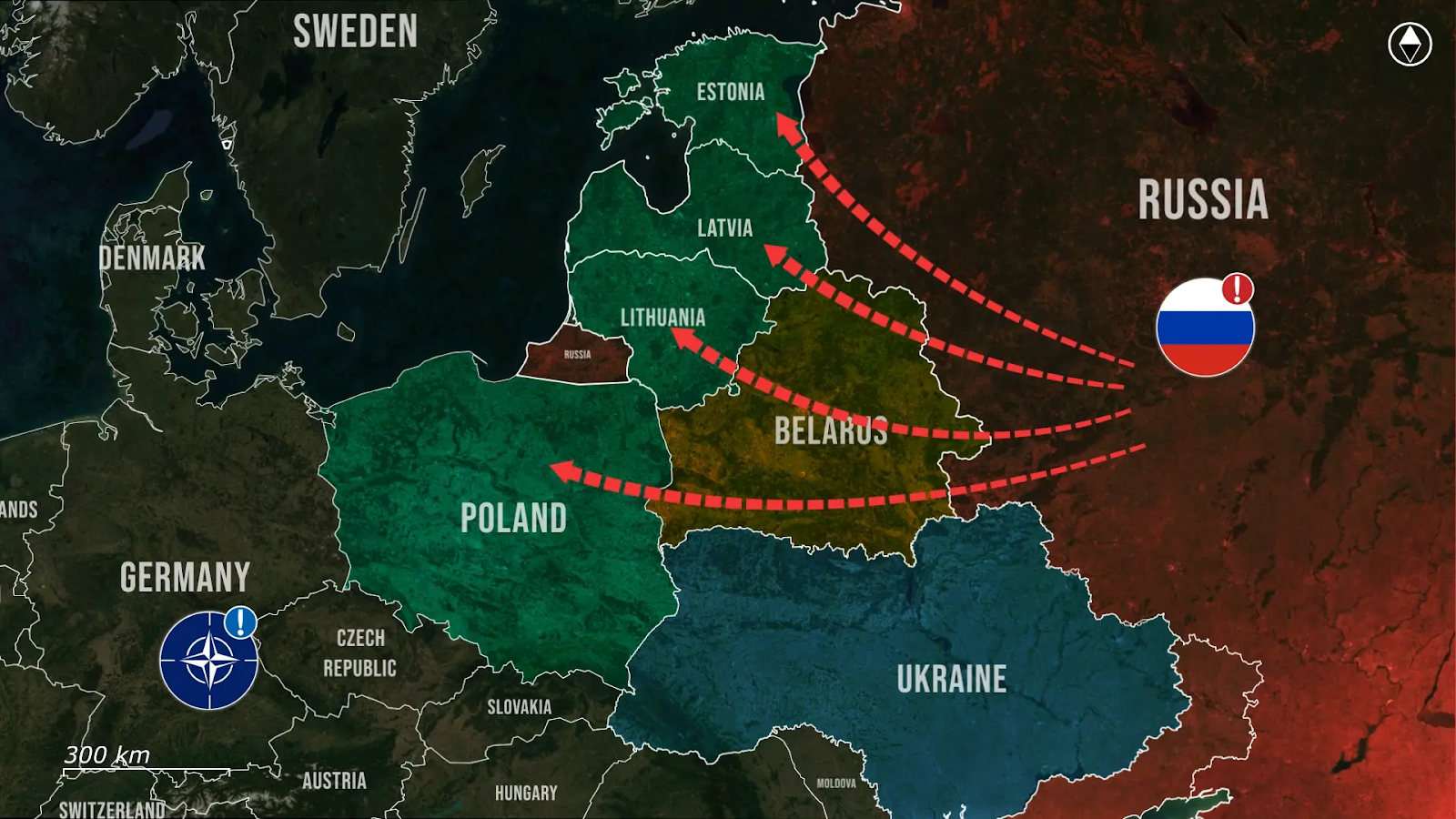
In our regular frontline report, we pair up with the military blogger Reporting from Ukraine to keep you informed about what is happening on the battlefield in the Russo-Ukrainian war
You could close this page. Or you could join our community and help us produce more materials like this.
We keep our reporting open and accessible to everyone because we believe in the power of free information. This is why our small, cost-effective team depends on the support of readers like you to bring deliver timely news, quality analysis, and on-the-ground reports about Russia's war against Ukraine and Ukraine's struggle to build a democratic society.
Become a patron or see other ways to support.

© Tetiana Dzhafarova/Agence France-Presse — Getty Images
Askold Krushelnycky examines how Donald Trump’s fluctuating position on the Ukraine war has encouraged Kyiv to look closer to home to produce the weapons it needs to fight Russia

© Ukrainian Armed Forces

© Eduardo Munoz/Reuters

© Shutterstock
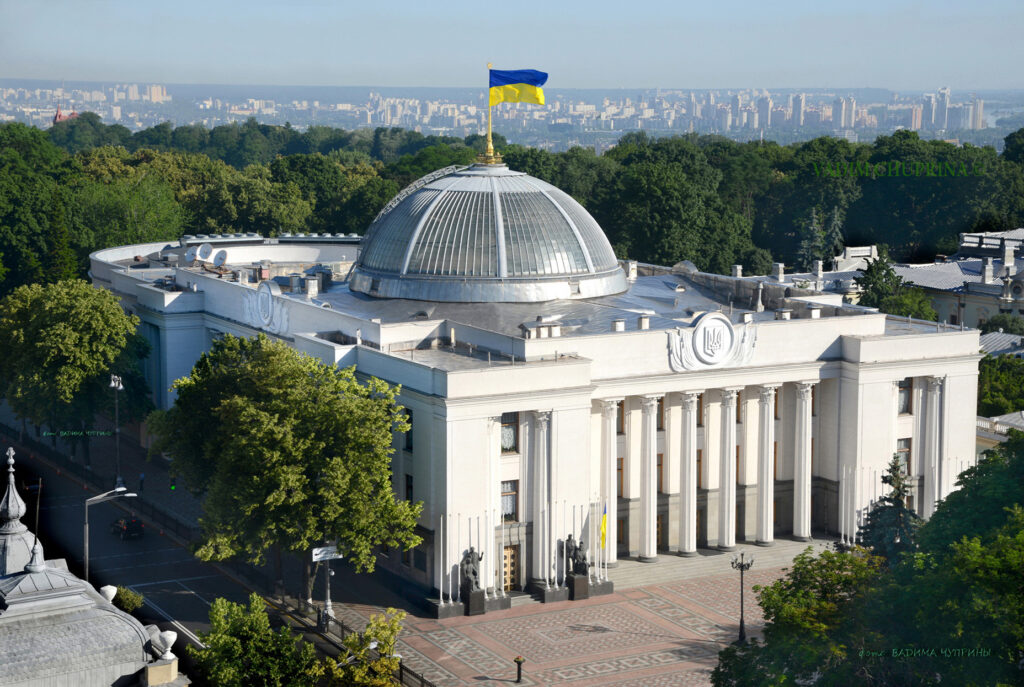
Ukraine faces a potential funding shortfall of $10-15 billion next year as the country struggles to meet reform commitments demanded by international lenders while maintaining intensive defense spending, according to a Reuters analysis.
The government currently directs most state revenues toward military operations, relying on foreign aid totaling $139 billion since Russia’s February 2022 invasion to cover social and humanitarian expenses, state data shows.
Central Bank Governor Andriy Pyshnyi revealed that only one-third of the $65 billion required for 2026-2027 has been secured, with negotiations continuing for the remainder. A survey of eight economists by the Centre for Economic Studies in Kyiv indicates Ukraine will need between $39 billion and $58 billion in external financing for 2025 alone.
“A key challenge for the government now is to look for $10-15 billion in addition to that volume of aid which partners have already pledged for 2026,” ICU investment house stated in a research note, according to Reuters.
The funding gap has widened after Ukraine missed several reform targets agreed with lenders, including judicial appointments and anti-corruption leadership positions. President Volodymyr Zelenskyy’s decision to tighten control over the National Anti-Corruption Bureau (NABU) and Specialized Anti-Corruption Prosecutor’s Office sparked the largest wartime street protests and drew sharp criticism from European allies.
Zelenskyy subsequently reversed course, submitting new legislation to parliament to restore institutional independence. The draft bill was scheduled for a vote on 31 July.
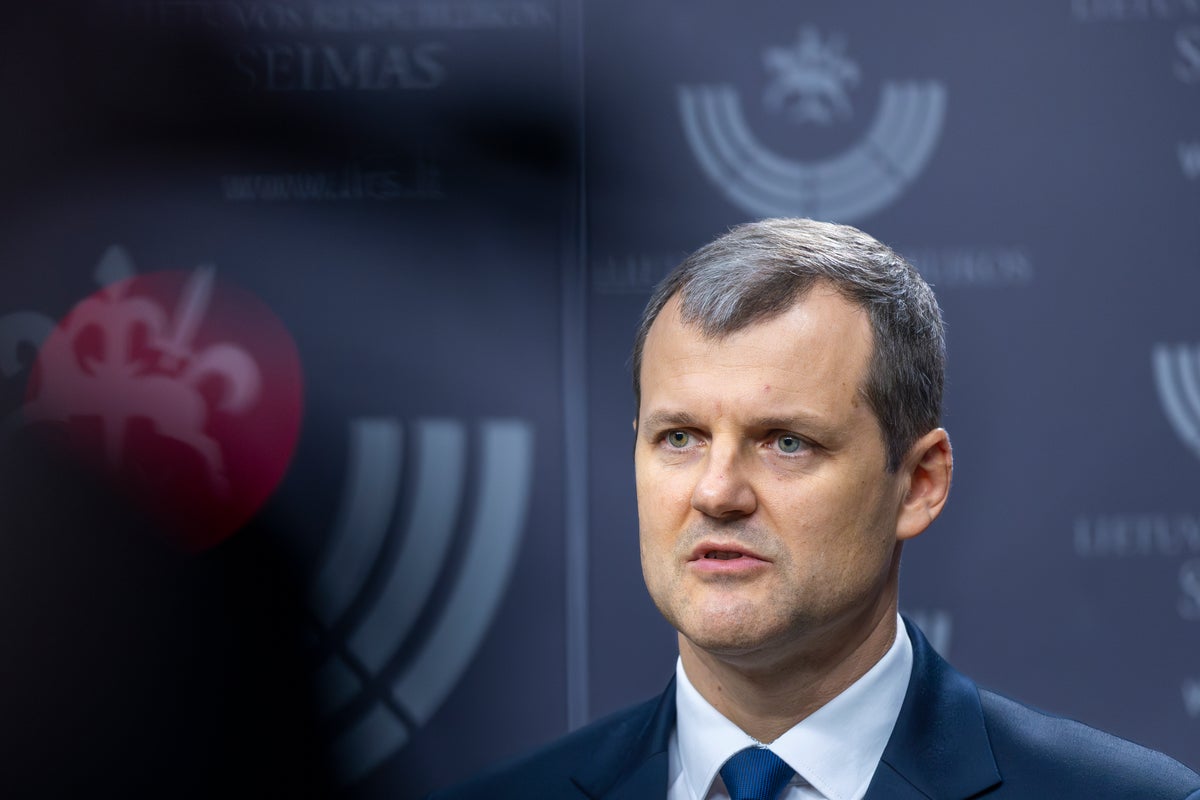
© Copyright 2024 The Associated Press. All rights reserved


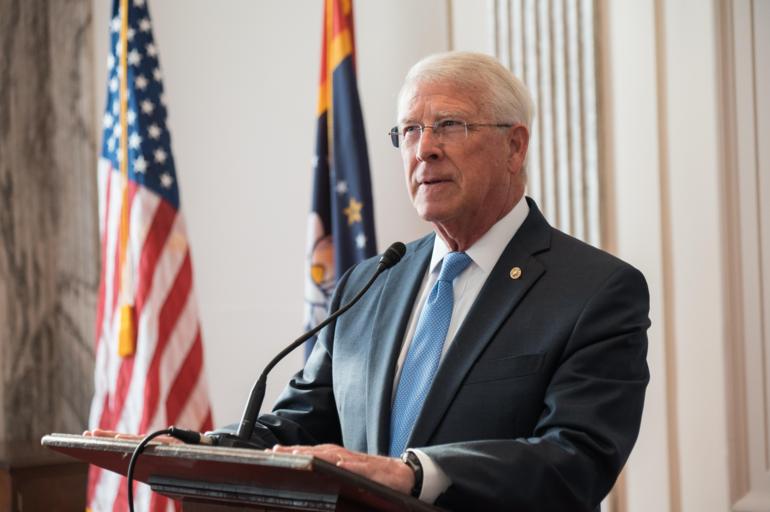
Two senior Senate Republicans have unveiled legislation that would enable European allies to finance US weapons donations to Ukraine, providing the most detailed framework yet for President Trump’s proposal to shift war funding to Europe, The Wall Street Journal reported on 30 July.
The Peace Act, proposed by Sens. Roger Wicker (R-Miss.) and Jim Risch (R-Idaho), would establish a Treasury fund to accept money from allies, allowing the Defense Secretary to pay contractors to replenish US stockpiles while continuing weapons shipments to Ukraine without compromising American military readiness, according to GOP aides familiar with the proposal.
The legislation aims to generate $5 billion to $8 billion annually, with Germany and the United Kingdom identified as likely contributors, the aides said.
“This is the fastest way to arm Ukraine as well as to minimize the strategic and military threat posed by Russia to the US and NATO,” Wicker said, according to the WSJ.
The proposal comes as Trump has grown increasingly frustrated with Russian President Vladimir Putin’s rejection of US-led cease-fire efforts. After initially giving Putin a 50-day deadline for a cease-fire, Trump moved that deadline up to 10 days on 28 July, threatening Russia and its trading partners with new tariffs and secondary sanctions if Moscow refuses to negotiate.
Wicker, who chairs the Senate Armed Services Committee, and Risch, who leads the Senate Foreign Relations Committee, have discussed the legislation with the White House, which has been “largely receptive to the idea,” aides said. The plan involves passing the measure later this year as part of the annual defense policy bill.
The mechanism would complement existing European payments to US contractors for new weapon production, which can take years to complete. The Peace Act would accelerate delivery by tapping existing US inventories, according to the WSJ report.
The US has provided nearly $66 billion in security assistance to Ukraine since Russia’s 2022 invasion, but the Republican-led Congress shows little appetite for authorizing additional foreign aid packages.
Trump has approximately $3.85 billion in previously authorized drawdown authority remaining, though he has not yet used this tool to send new arms packages to Ukraine. His administration continues delivering previously approved weapons packages from the Biden era, following a brief Pentagon pause in certain munitions earlier this month.

© Tierney L. Cross/The New York Times

© Pool photo by Jordan Pettitt

© Pool photo by Jordan Pettitt
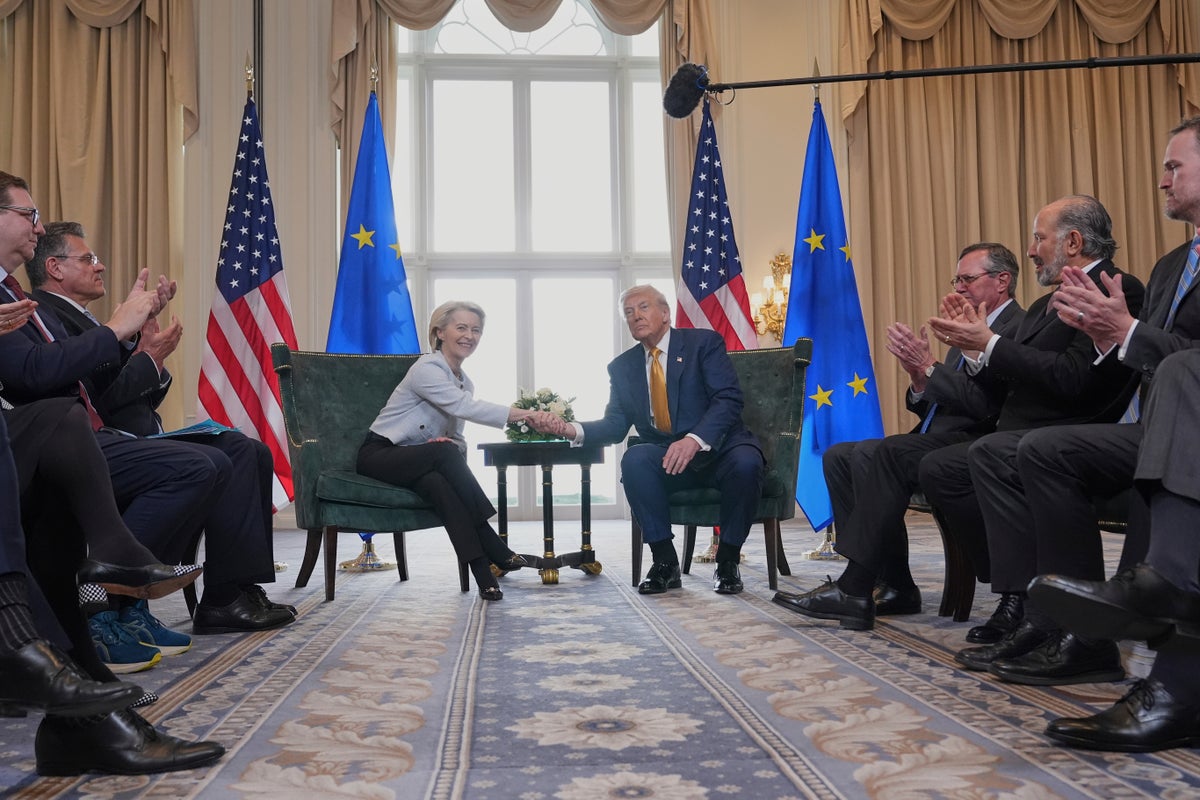
© Copyright 2025 The Associated Press. All rights reserved
![]()
European Commissioner for Transport and Tourism Apostolos Tzitzikostas has warned that Europe’s roads, bridges and railways cannot support rapid movement of tanks, troops and military supplies in case of war with Russia, Financial Times reported on 29 July.
“If Nato’s tanks were called to respond to an invasion by Moscow’s forces across the EU’s eastern border, they would get stuck in tunnels, cause bridges to collapse and get snarled up in border protocols,” Tzitzikostas told the publication.
The Greek commissioner outlined plans to spend €17 billion ($20 bn) on overhauling continental infrastructure to boost military mobility.
“We have old bridges that need to be upgraded. We have narrow bridges that need to be widened. And we have nonexistent bridges to be built,” he said.
Current infrastructure poses significant obstacles for military operations. European trucks typically weigh up to 40 tonnes, while tanks reach 70 tonnes. “The reality today is that if we want to move military equipment and troops from the western side of Europe to the eastern side, it takes weeks and in some cases months,” Tzitzikostas added.
The European Union is developing a strategy to ensure troops can move “in a matter of hours, maximum a matter of days” in response to an attack. The plan involves upgrading 500 infrastructure projects along four military corridors across the continent.
These projects, identified in conjunction with NATO and the alliance’s military commanders, remain confidential for security reasons. Brussels also plans to reduce bureaucracy to prevent “tanks being stuck in paperwork” when crossing borders, according to Tzitzikostas.
The strategy, set to be presented later this year, forms part of broader war preparations amid warnings of possible confrontation with Moscow and expected reduction in US military presence in Europe.
NATO Secretary-General Mark Rutte warned in June that Russia could attack alliance members by 2030. German Federal Intelligence Service assessments indicate Russia views itself in systemic conflict with the West and is preparing for major war with NATO.
EU Defense Commissioner Andrius Kubilius shared Western intelligence assessments that Russian attack on EU states could occur within the next few years.

© Tierney L. Cross/The New York Times
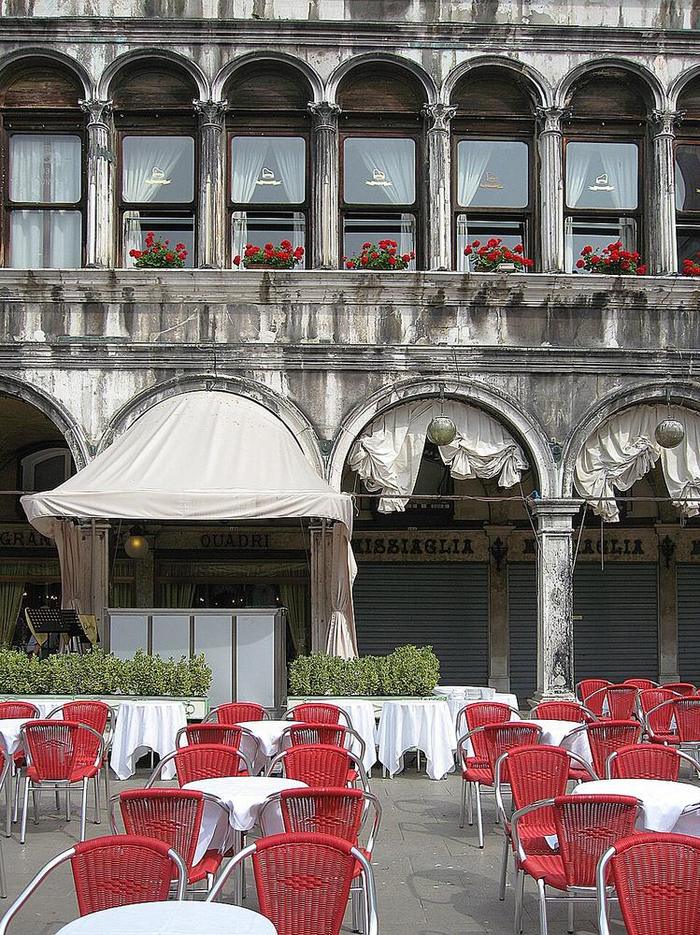
The Russians are continuing to vacation while war rages on. As Russian missiles rain down on Ukrainian cities, Russian citizens are sunbathing undisturbed on the beaches of France, Italy, and Spain, The Telegraph reports.
As of late July 2025, approximately 74% of Russian citizens support the war, while 24% say they want to launch a nuclear missile strike on Ukraine.
Despite Russia’s all-out war against Ukraine and ongoing sanctions, Europe continues to welcome Russian tourists. Overnight stays by Russians in French and Italian hotels rose by 19% over the past year.
These countries, both NATO and EU members, are still opening their doors to citizens of the aggressor state.
“In the fourth year of Russia’s war of aggression against Ukraine, it is extremely surprising to see statistics showing an increase in the number of visas issued to Russian citizens,” emphasized Ukraine’s Ambassador to the EU, Vsevolod Chentsov.
France, a member of the “Coalition of the Willing” and an active supporter of Ukraine, is in no hurry to restrict tourist flows from Russia. Along with Italy, it advocates keeping borders open, at least for “wealthy Russians.”
Russia does not intend to end its war against Ukraine. On the contrary, Russian ruler Vladimir Putin has told US President Donald Trump that military actions will escalate during the summer offensive. In the first half of 2025, Russia killed or injured 6,754 civilians in Ukraine, the highest number for a six-month period since 2022, the UN reports. In June 2025 alone, the UN documented 232 civilian deaths and 1,343 injuries, marking the highest monthly casualty toll in three years.
“There are many Russians who support the war, and particularly the Russians who have money. What we absolutely don’t want to do is allow these Russians to enjoy the privileges and resources of Europe, while at the same time they’re supporting Putin’s war efforts,” said financier and anti-Putin activist Bill Browder.
Experts believe that access for Russians is not only morally questionable but also a security risk. Browder calls for a ban on entry for Russian citizens unless they can prove they oppose Putin’s regime.
He stressed that denying visas can pressure the Putin regime and reduce the security threat posed by Russia’s hybrid war against the West.
Despite a ban on direct flights, dozens of travel routes between Russia and Europe still operate via Türkiye, Georgia, and Serbia. Meanwhile, Ukraine pays in blood for every day of freedom, as Europe hosts those who support the aggressor.